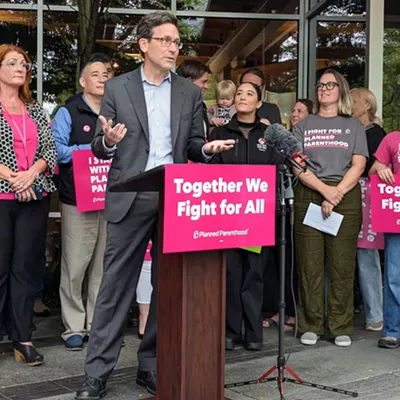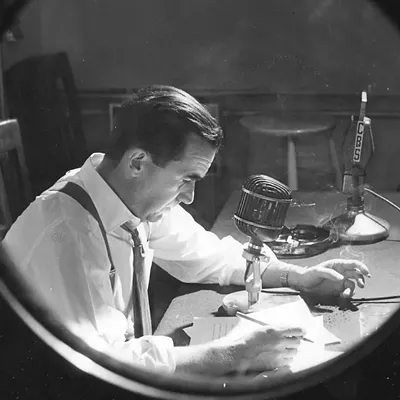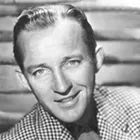The Spokane Regional Transportation Council recently received federal money for the project, making further improvements possible.
Louise McGrody of the Bicycle Alliance of Washington thinks the Fish Lake Trail "has a lot of potential for recreation and transportation." Though Spokane received the rail corridor right-of-way from Union Pacific in 1991, only 3.5 miles are paved, north of Scribner Road near Marshall and Fish Lake.
McGrody says the plan is to pave the entire 22 miles of the trail, which would boost its value for transportation. One hiker pointed out that even now some EWU students use it for commuting, though they must have plenty sturdy mountain bikes to get over some of the rocks and rail bedding.
For a lot of people, though, the lure of the trail is purely recreational. But first, you have to find the darn thing, something this hiker had tried unsuccessfully to do several times. Yes, it's on the city map, but it's a lot more substantial there, where it looks like an accomplished fact, than it is when you're standing among the trees.
David Bauermeister of INTC assembles the group in the parking lot of Sunset Hill Baptist Church at Sunset Boulevard and Government Way and leads the way to the "trailhead" (such as it is) just south of the parking lot.
Barely discernible among the scrub and the scraggly pines, the Fish Lake Trail -- an unpromising, unmarked scrape in the dirt -- straggles off in the direction of I-90, passing first under the towering elevated train tracks of Latah Junction.
Within a few minutes, I-90 screams below as we step onto the former Union Pacific bridge, picking our way over jagged rocks the size of grapefruits, the city skyline hulking in the distance. That looks pretty good once we get to the decaying wooden bridge over the freeway off-ramp. Hint to those inclined toward vertigo: Don't look down through the spaces between the railroad ties.
Once past the freeway, the trail stretches ahead, mostly flat, passing among pines, in and out of sight of Highway 195. Orange and yellow BNSF Railway engines, pulling an endless string of brown and cream freight cars, chug atop an elevated track to the west. Houses on a ridge above gaze across to Spokane's South Hill and past a trailer court that's just off the highway.
Earth packed so smooth you could walk it in your flip-flops squeezes between 30-foot walls of a basalt canyon, making it hard to picture a train nosing through. Here, the one-time track is crowded by small pines creating ample shade from the late afternoon sun. Farther on, the trail opens up to a vista of two old barns, an abandoned white bus, several rusting cars and an ancient crumpled shed. Across the narrow valley, traffic snakes along High Drive. Just a couple of arms-lengths off the trail, between a shed and an aging white barn, a lone sheep and three curious llamas peer vigilantly at the passersby.
As the trail slants to the west, the sounds of the highway are muted now and small heaps of detritus cast off by transients are strewn here and there: broken glass, discarded clothing, malt liquor and plastic soda bottles. Residents must find the area handy for occasional dumping, too: old tires, scraps of carpet, a clothes dryer gone to its rest. Not a lot of trash, but it does nothing to improve the scenery.
Advocates say with the added presence of hikers and bicyclists on the trail, transients and trash would diminish.
Rail trails can even attract investment to a community, advocates say. Bicycle Alliance member Eileen Hyatt gives the example of Harrison, Idaho, currently "going through a renaissance" because it is located near the Trail of the Coeur d'Alenes. A bike shop, several B & amp;Bs and a shuttle bus from the town to the trail have sprung up to serve the trail users. Similarly, Louise McGrody gives the example of the town of Cle Elum in the Cascades, smack up against the John Wayne Trail, much beloved by cyclists.
How to make it happen? McGrody cites the example of the Centennial Trail, which came about through the efforts of "people who cared," She says, "Folks who care about this trail could make it happen, too."
For more information, contact David Bauermeister of the Inland Northwest Trails Coalition (459-4108), Louise McGrody of the Bicycle Alliance of Washington (206-224-9252) or Mike Stone of Spokane Parks and Recreation (625-6453 or mstone@spokanecity.org).














